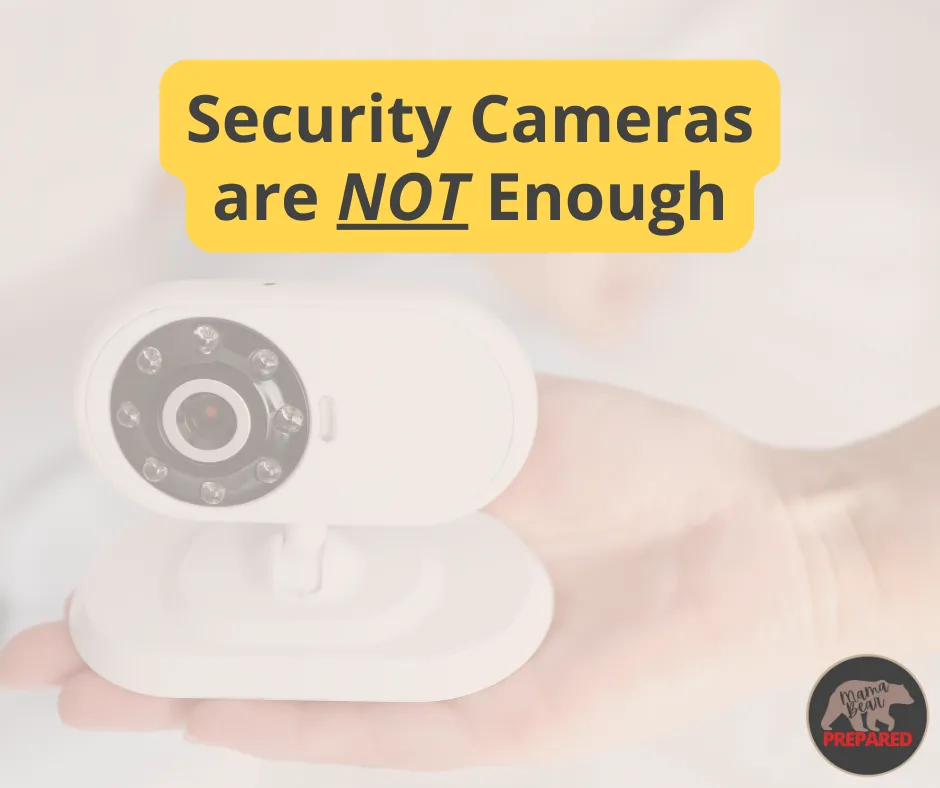
Cameras Alone Don’t Keep Your Children Safe
Cameras Alone Don’t Keep Your Children Safe
As parents, we do everything we can to protect our children. We install locks, teach rules, and sometimes invest in home or providers with security cameras. Cameras feel like a solution—they’re visible, high-tech, and comforting. But here’s the hard truth: just because a camera is present does not mean your child is safe. Cameras do not prevent bad things from happening.
The Illusion of Safety
It’s easy to assume that if a camera is watching, danger can’t occur. But the presence of cameras often creates a false sense of security:
Cameras most always cover entrances and public spaces, but often leave blind spots where the unimaginable can happen - and those looking for an opportunity know this.
Even if bad things are caught on camera, recording footage does nothing in real-time unless someone is paying attention.
We often believe that by catching crime on tape, it means that those who get caught will be rightly punished.
In short, a camera does not stop harm before it happens nor does it mean that it will prevent it from happening again.
Why Positioning Matters
Even the most sophisticated cameras fail if they are poorly placed:
Blind spots leave children vulnerable.
Motion detection or recording may miss subtle behaviors or manipulations.
Some adults know how to navigate or manipulate camera systems to appear trustworthy while hiding harmful behavior.
The truth is that cameras are a tool, not a safeguard. They cannot replace awareness, intuition, and proper vetting of the people in your child’s life.
Cameras Can Mask Risk
Some adults intentionally use cameras to create the appearance of safety:
They act “on their best behavior” when they know cameras are present.
They rely on your trust in technology to avoid scrutiny of their character or background.
A visible camera may make parents less likely to ask questions or dig deeper, creating a dangerous blind spot.
This is why parents who rely solely on cameras are at risk of mistaking observation for protection.
Prevention Comes from People
The reality is simple: true safety comes from knowing the adults in your child’s life are trustworthy, not from being prepared to catch people hurting others.
Proactive steps include:
Ask the right questions
Learn about experience, behavior, and a person's past. Don’t shy away from difficult topics.
Trust your instincts
Your gut is an early warning system. If something feels off, take notice.
Verify trustworthiness through a professional background check
Verified checks ensure adults in your child’s life are truly safe.
Use cameras strategically—but not as a replacement for prevention
Cameras should supplement awareness, not replace asking questions, verifying information, and trusting your judgment.
Protect What Matters Most
Our children’s safety is non-negotiable. Cameras may capture events, but they cannot prevent harm on their own. Prevention comes from asking hard questions, verifying trustworthiness, and trusting your instincts.
➡️ [Join the Mama Bear Community.]
(get support from likeminded mamas to have the courage to ask tough questions and do hard things)
➡️ [Learn more about background checks here.]
(why it's not safe or appropriate to trust your child's safety with standard checks or online services)
➡️ Do you doubt your own intuition? [Get our 7 Days to Sanity Workbook here.]
Prevention today protects against regret—and ensures peace of mind for you and your children.
We know cameras can’t replace instincts and prevention—how do you trust your gut when it comes to the adults in your child’s life? Share your experiences below so other parents can learn from you!